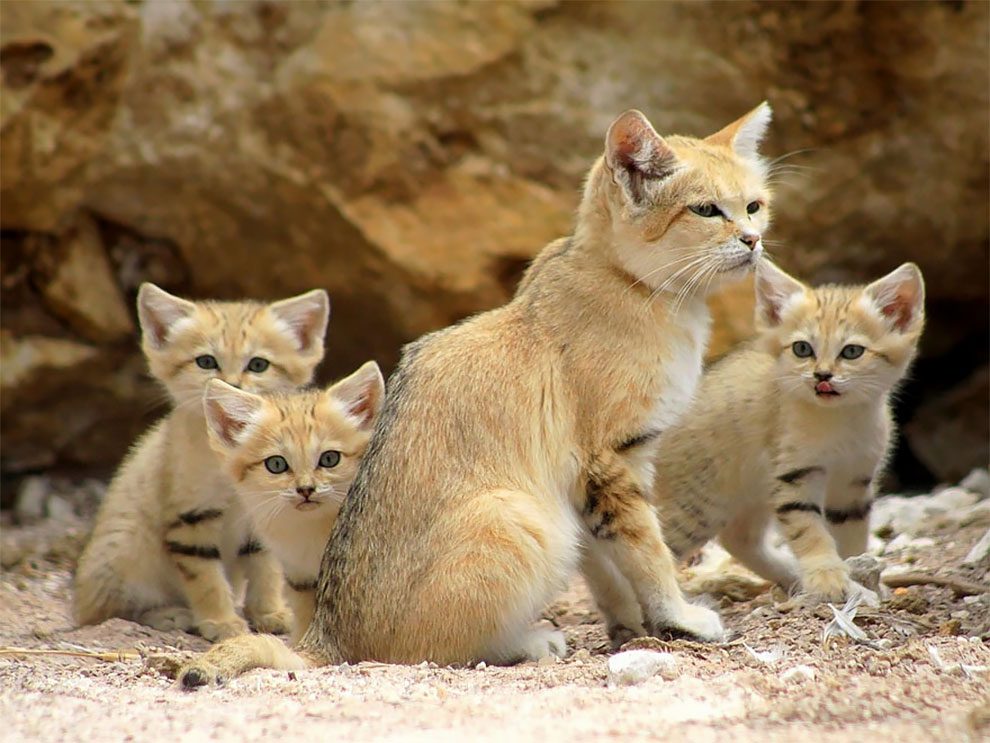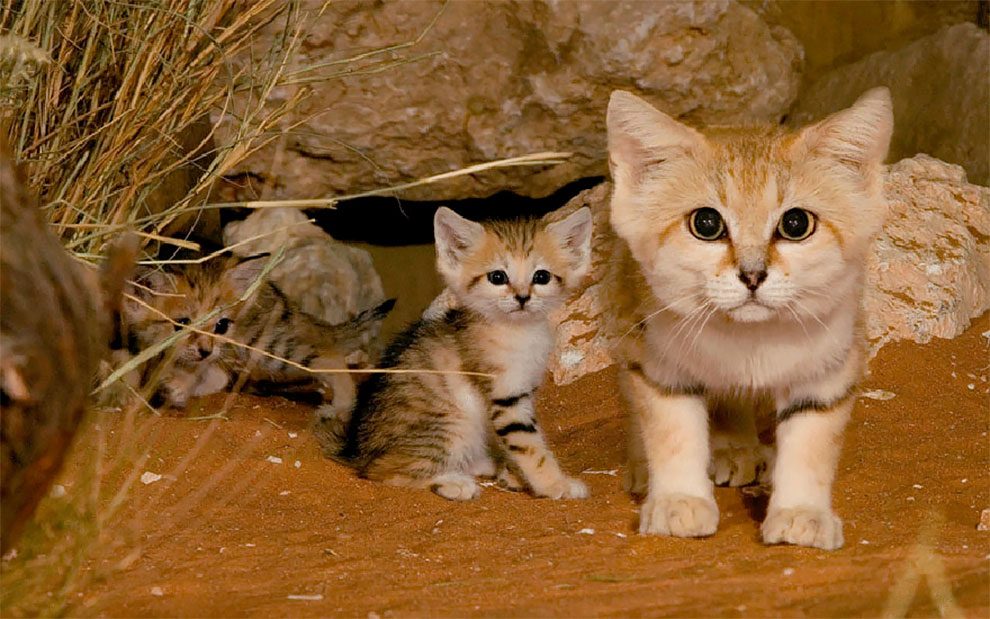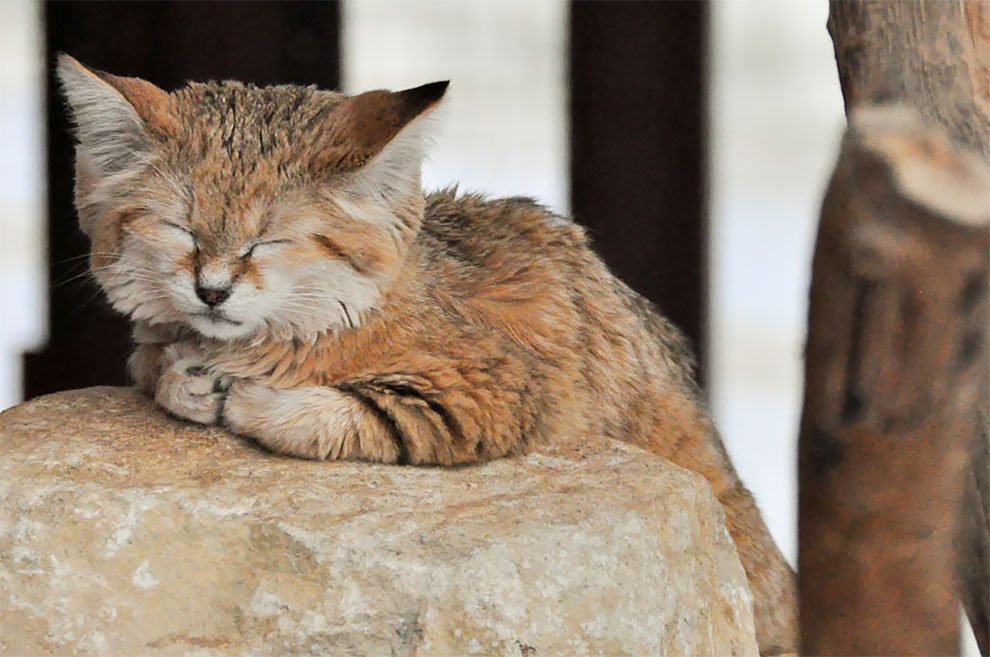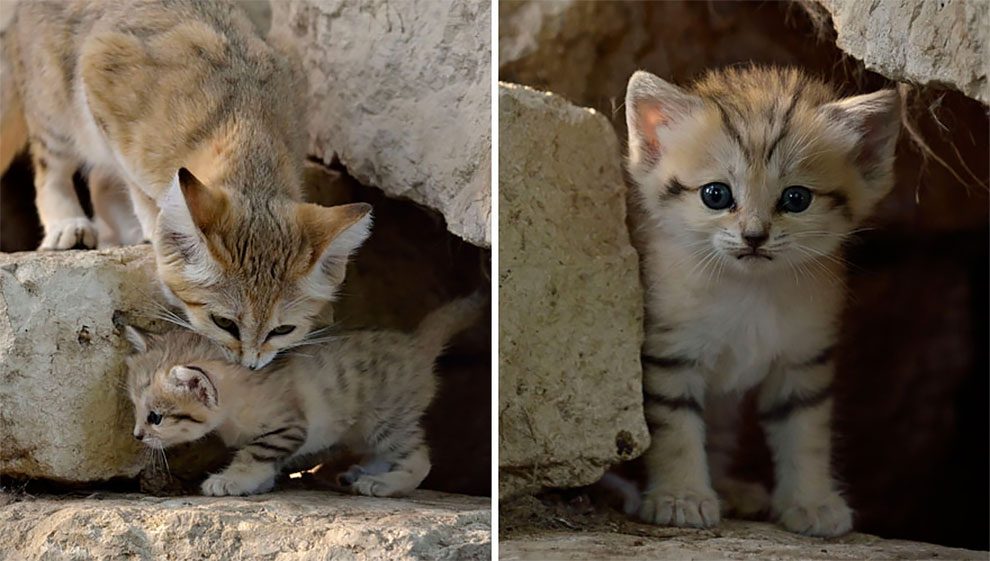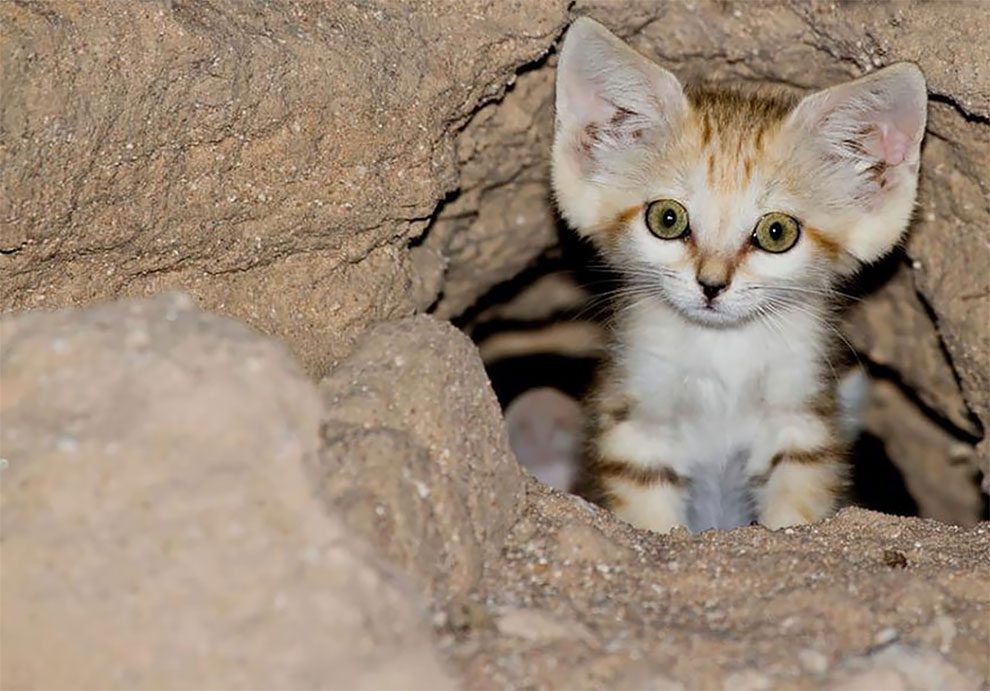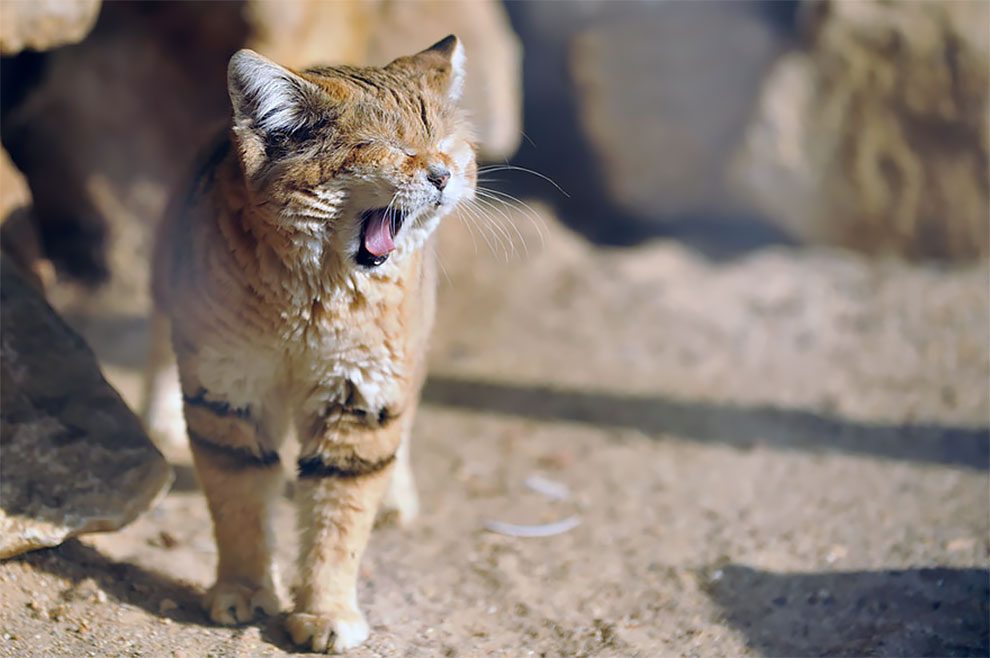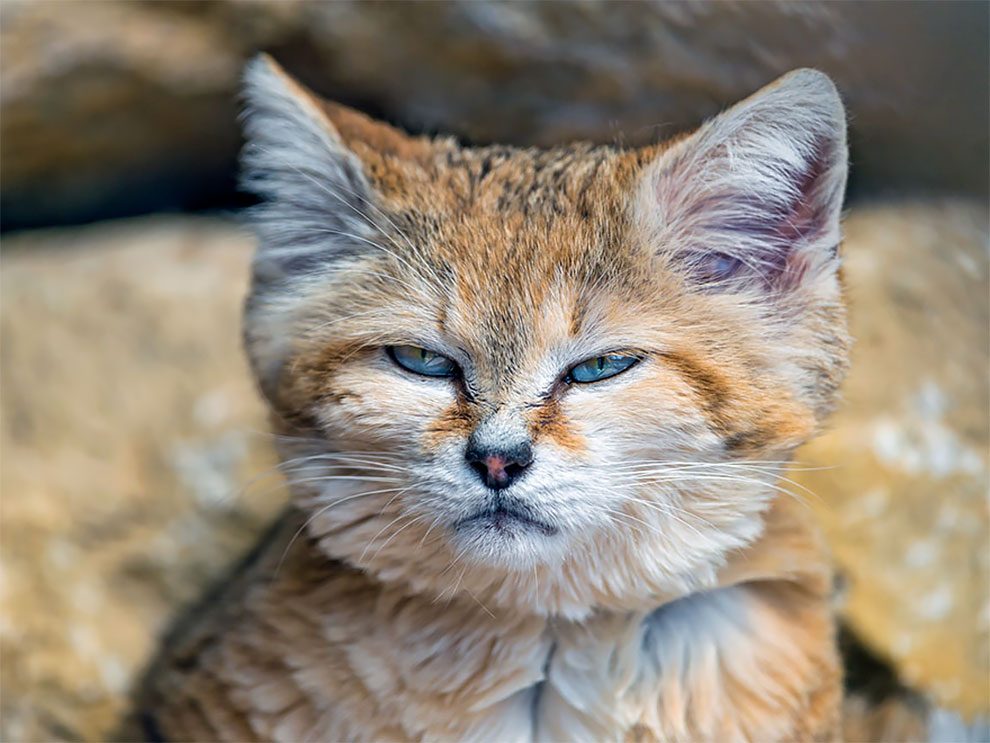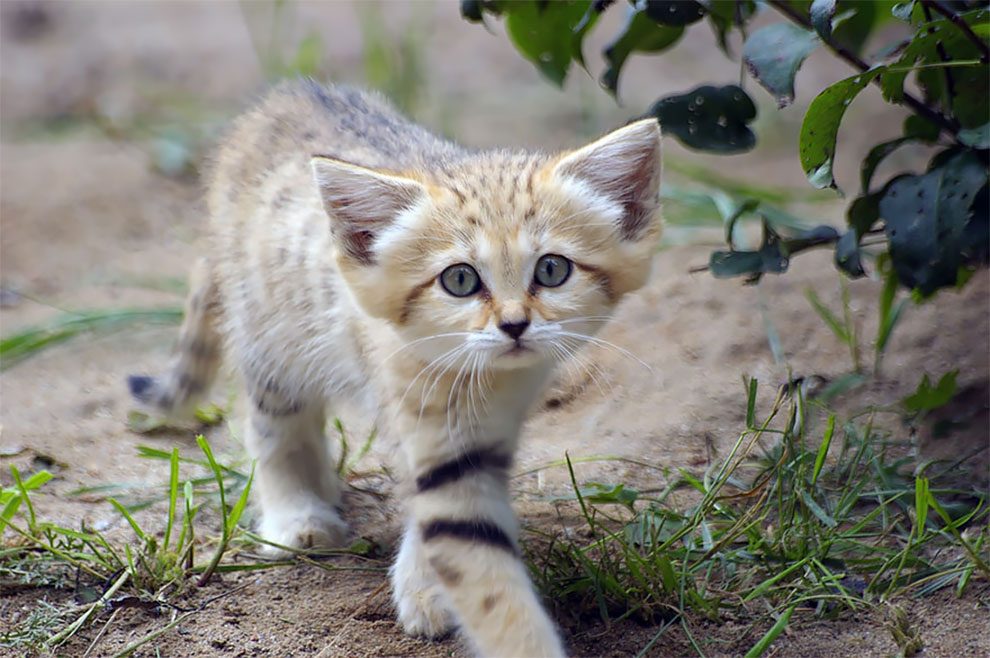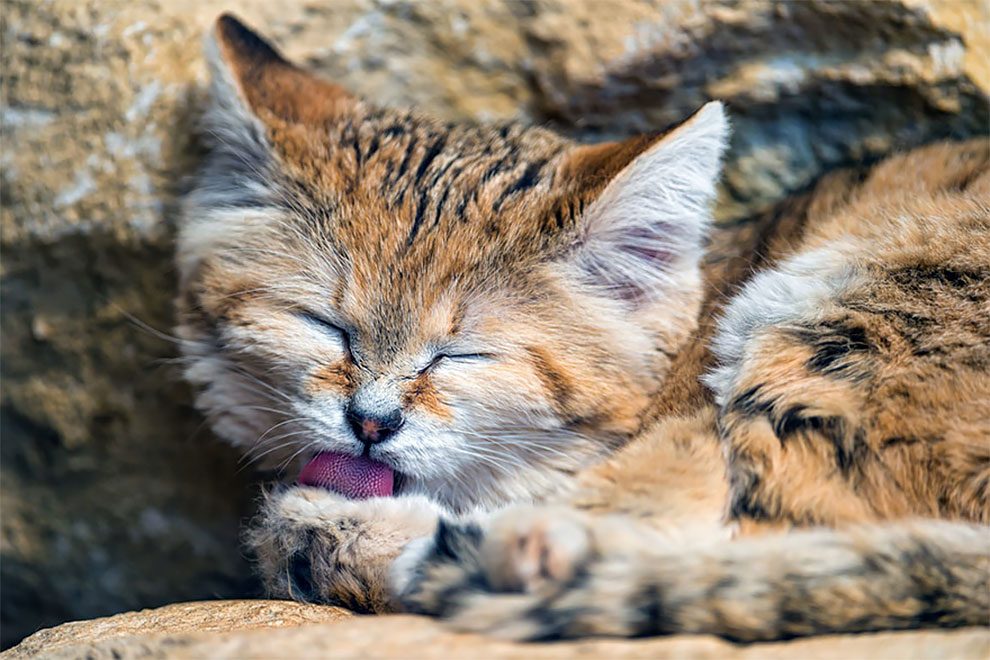There’s A Species Of Wild Cats Where The Adults Look Like Kittens Their Entire Lives
Sand cats are a small, solitary cat native to deserts in Africa and Asia. Superbly adapted to life in the desert, they can live without water, run on shifting sand and detect prey underground.
h/t: nationalzoo, boredpanda
The tail, which can account for about half of the head-body length, features two or three rings and a black tip. Body length ranges from 18 to 22.5 inches (45 to 57 centimeters), with the tail adding on an extra 11 to 14 inches (28 to 35 centimeters). Adult sand cats weigh between 3 to 7.5 pounds (1 to 3.5 kilograms).
Sand cats live in three distinct regions of the world: Africa’s Sahara desert, which stretches through Algeria, Niger and Morocco; throughout the Arabian peninsula; and in parts of central Asia including Turkmenistan, Iran, Pakistan and Afghanistan.
Sand cats prefer a very dry, arid habitat with little vegetation, for which they are well adapted. They are sand-dwelling creatures, inhabiting dry plains and rocky valleys where conditions are extreme. Surface temperatures can reach 124 degrees Fahrenheit (51 degrees C) during the daytime, then drop to as low as 31 degrees Fahrenheit (-0.5 degrees C) at night. This species prefers flat or rolling terrains, and will retreat to burrows when temperatures become too extreme. Due to the importance of burrowing and digging to sand cats, they are not found in areas where soil is compacted.
Sand cats eat primarily small rodents, occasionally hares, birds, spiders, insects and reptiles. They are fearless snake hunters—their prey can include venomous vipers and other snakes. Living in a relatively desolate habitat, sand cats are opportunistic feeders out of necessity. Like many desert-dwelling species, sand cats can survive without drinking water for weeks at a time. They will instead obtain any moisture they need from their prey.
Sand cats hunt by skulking close to the ground and using their enhanced sense of hearing to detect prey. Sounds of a potential meal burrowing underneath the ground trigger sand cats to begin digging rapidly to expose and capture prey. Upon capture, they may cover its kill and return later to feed.
